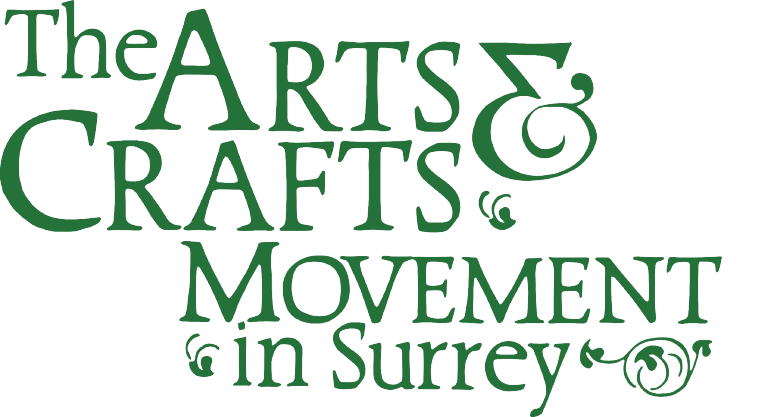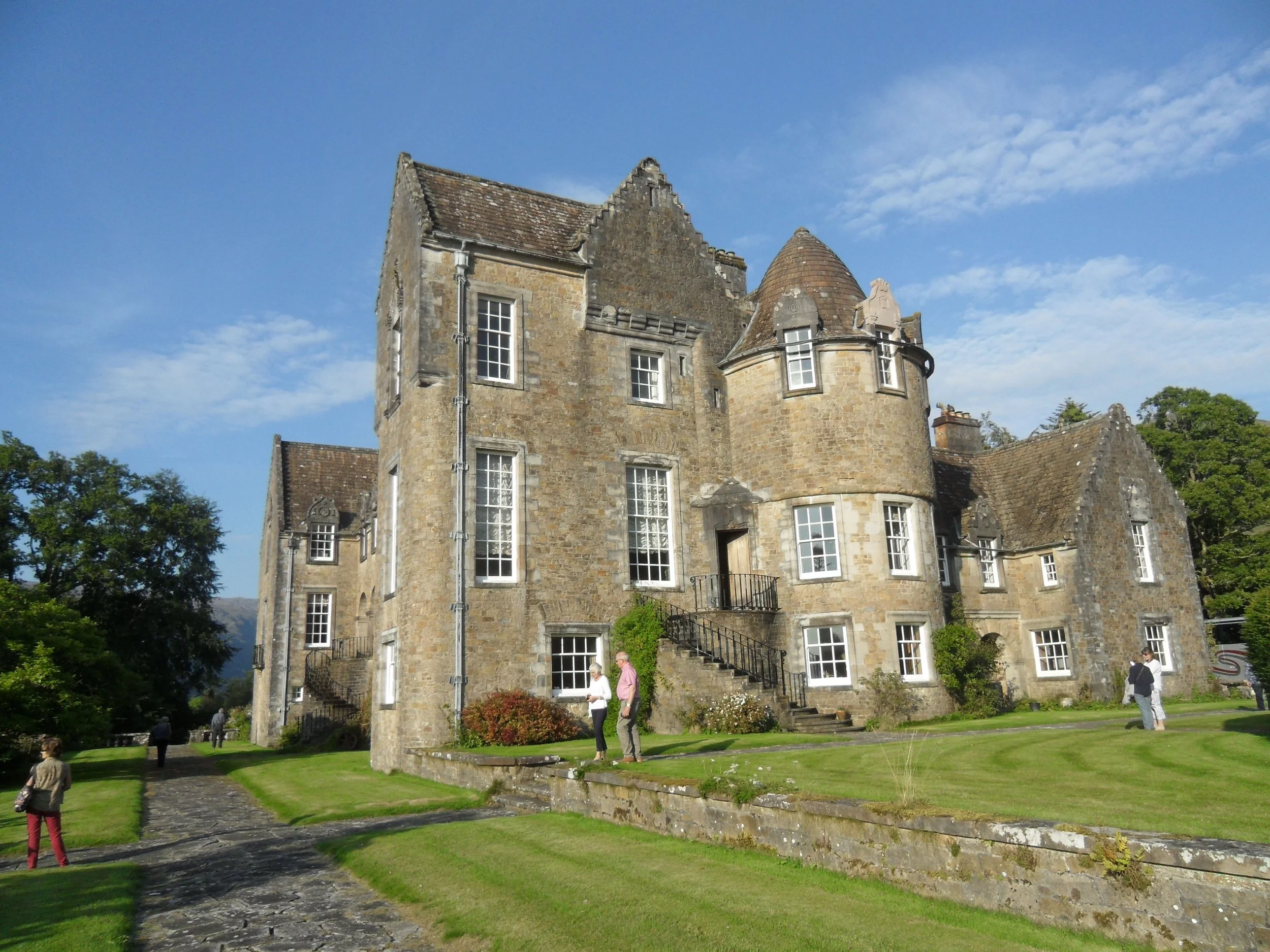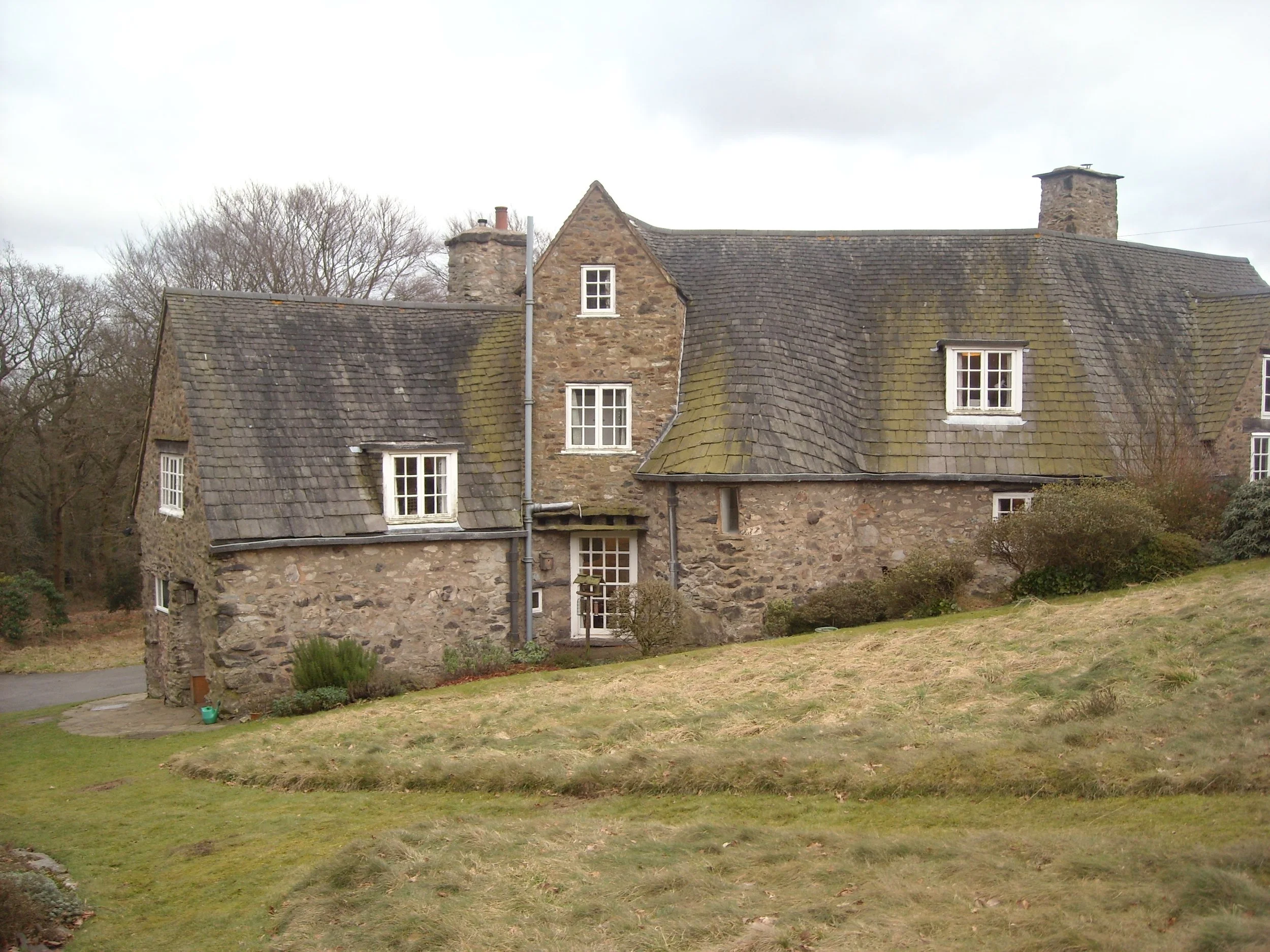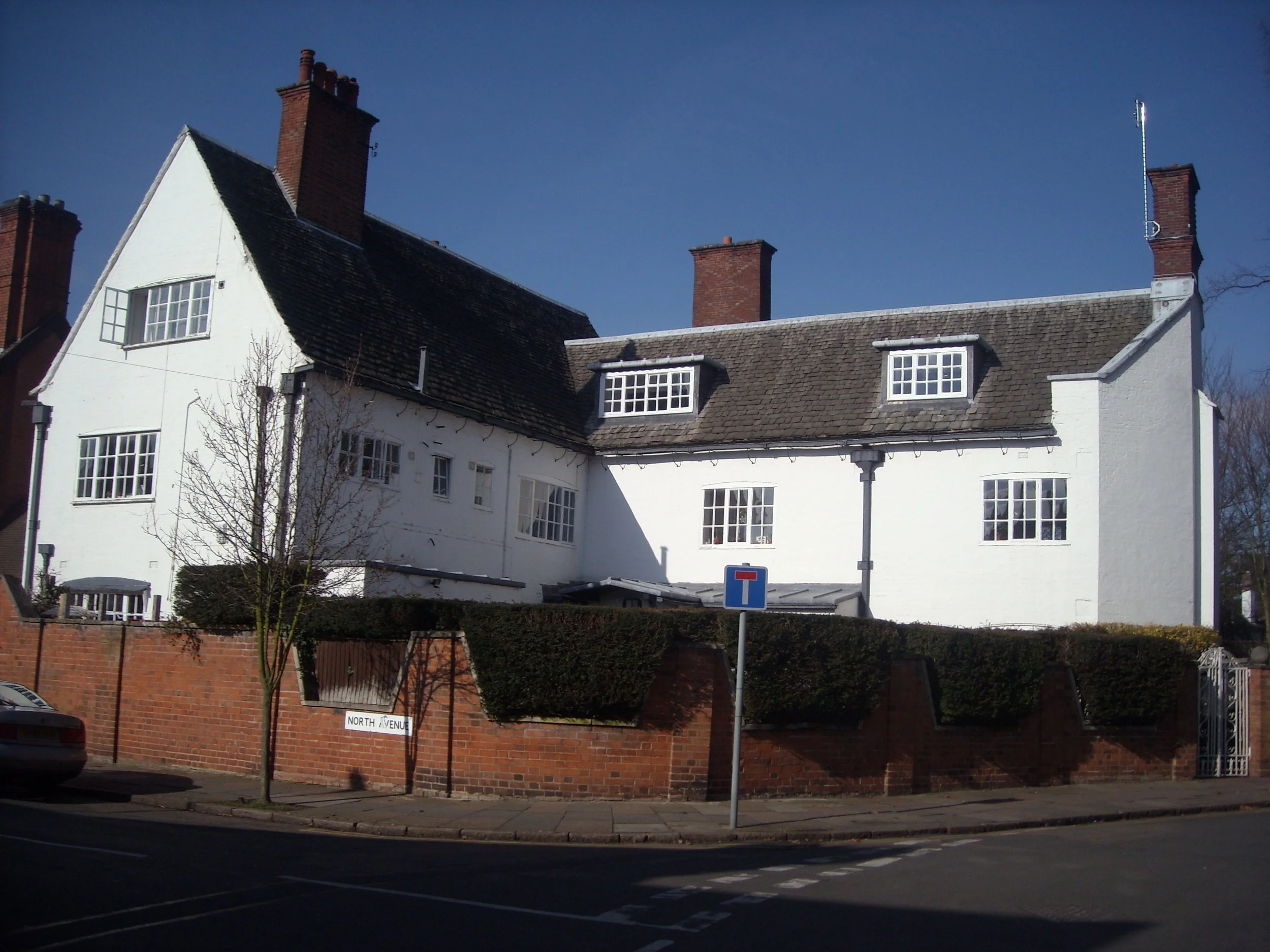ACMS EVENTS -2009
The following lectures were presented during 2009
Helen Chapman Davies – The story of Onslow Village 27 January
Desna Greenhow – The Rob Dickins collection of Victorian photographs 24 February
Anne Anderson – Eglantyne Jebb, Charles Leland & the Home Arts Movement 1 April
Jan Ward – Architect in a Dressing Gown 24 July at the Tilford Institute
Jean Vacher – The printed textiles of Barron and Larcher 29 September
Jeanne Dolmetsch – Arnold Dolmetsch – Arts and Crafts Musician and Craftsman 29 October
Simon Green – Beyond Balmorality – Arts and Crafts in Scotland 24 November
The following events and visits were made during 2009
Ernest Gimson and the Arts and Crafts Movement in Leicester – 21 & 22 February
Whitelands College and De Morgan Centre – Friday 17 April
ACMS AGM – Thursday 14 May at the Tilford Institute
Goddards study day – Tuesday 16 June, with lecture by Gavin Stamp
Munstead Grange – 13 August
Tour of Lyndhurst, Boscombe and Bournemouth – Saturday 3 & Sunday 4 October
The story of Onslow Village – A Garden Suburb in an ancient landscape Helen Chapman Davies
Tuesday 27th January 2009
at the Onslow Village Hall
An illustrated lecture by Helen Chapman Davies placing Onslow Village into context. The story begins with Guildford Park – a royal hunting park created by Henry II shortly after 1154. The talk continues with the Onslows, who bought Guildford Park, and the family’s rise to prominence. The creation of the Garden Suburb of Onslow Village follows, described at the time as ‘a new and greater Guildford’ and named in honour of the 5th Earl of Onslow who sold the land and who maintained a keen interest in the venture. The village was developed on garden city lines with the first houses ready for occupation in 1920.
Helen Chapman Davies has developed her interests as an author and local historian following retirement from the University of Surrey.
The Rob Dickins collection of Victorian photographs of artists, writers and the great and good of the nineteenth century Desna Greenhow
Tuesday 24 February 2009
at the Onslow Village Hall
This lecture by Dr Desna Greenhow features the collection of over 4000 photographs and letters recently donated to the Watts Gallery, which she is transferring on line for research in the future. During the Watts Gallery refurbishment, it will be housed in the Witt Library at the Courtauld Institute. Last year the exhibition ‘Victorian Artists in Photographs’, gave a taster of some of the plums in the collection. Now touring, it is to be shown at the Ruskin Library in the University of Lancaster in the spring. The lecture will give an idea of the flavour and potential of the collection. There are marvellous images of well-known figures from the nineteenth century, and entertaining stories about some of them.
Desna is member of ACMS, a historian who has restored a mill, producing flour by water power, and created and run a working water mill museum, gallery and workshops. Her present involvement is in nineteenth century idealism in art – working at Watts Gallery writing and editing publications, and organising exhibitions, including ‘Victorian Artists in Photographs’.
Eglantyne Jebb, Charles Leland and the Home Arts Movement Dr Anne Anderson
Wednesday 1 April 2009
at the Onslow Village Hall
The Home Arts Movement was invariably given a negative press by the art establishment, especially the members of the Art Worker’s Guild. Attitudes to the role and position of the amateur practitioner were ambivalent, as members of the Guild saw amateurism eroding the position of the professional, often male, worker. Yet the Home Arts Movement attempted to put Morris’s dictum into practice in terms of ‘Art by the People, For the People’. The Home Arts and Industries Association was at the forefront of promoting the crafts as ‘rationale recreation’; but as Anne Anderson will explain from the outset the intentions of the founders were at cross-purposes. Eglantyne Jebb saw the crafts as a means of elevating the tastes and morals of the labouring classes, while the American Charles Leland saw the crafts as a means of improving industrial production.
Dr Anne Anderson, trained as an Art Historian and Archaeologist; a researcher, author and lecturer, she is now based at Bristol University.
Architect in a Dressing Gown Jan Ward
Friday 24 July 2009 at the Tilford Institute
Jan Ward is a long-standing member of the Society of whose ongoing research into the work of architect Leonard Aloysius Scott Stokes (1858-1925) we have been aware. We are therefore delighted to see the publication of her new book The Leonard Stokes Directory – Architect in a Dressing Gown and have arranged this event to celebrate with Jan and learn about her findings during an illustrated lecture. We shall also learn about the portrait by Sir William Orpen that gives the book – and this lecture – its title.
Jan Ward’s interest in Leonard Stokes was kindled many years ago as a young planning technician for the local authority, when she visited Littleshaw – the house Stokes built for himself at Woldingham, high up on the North Downs of Surrey – to put up a site notice. In writing the book, she has travelled the country photographing his buildings that still exist and the sites of some that don’t. His more famous buildings, in addition to Littleshaw, which is heralded by many as a fine example of Arts and Crafts architecture, include St Clare’s Church at Liverpool, additions to Emmanuel College, Cambridge and Downside School in Somerset together with Minterne House for Lord Digby in Dorset.
The book, privately published in May 2009, includes chapters about the life and work of Leonard Stokes and a gazetteer of more than 120 commissions, most with colour photographs and black and white illustrations. Copies will be available for sale during the evening and for signature by the author.
Modern Misses : English Ladies – The printed textiles of Barron and Larcher Jean Vacher
Tuesday 29th September 2009
at the Onslow Village Hall
This lecture by Jean Vacher, Collections Manager at the Crafts Study Centre, University for the Creative Arts, will feature the Barron and Larcher partnership of the mid 1920s to 1940. The unique and pioneering work of these avant-garde printed textile artists, beginning with Phyllis Barron’s early experiments in her studio in Hampstead using natural dyes and historic tools, to their later work produced in Painswick, Gloucestershire will be examined. It will also explore the social milieu in which they circulated and the world of exhibiting, selling and commissioning craft during the interwar period. It will touch upon the work of other printed textile designers such as Enid Marx and the Omega workshop.
Barron and Larcher’s designs are in many ways quintessentially English and draw upon their Cotswold garden, domestic and social life for inspiration. They also look back to the past – to English, French, Eastern European, Russian and Indian traditions for technical information and historic designs. However, this Englishness is only one component of their unique and subtle designs that are in other ways bold, abstract – primitive even. In their spontaneity they embrace and reflect Modernism and the ideas of Continental Europe that broke so sharply with the arts and crafts traditions of the previous century.
Arnold Dolmetsch – Arts and Crafts Musician and Craftsman Jeanne Dolmetsch
Thursday 29th October 2009
at the Onslow Village Hall
Jeanne Dolmetsch LRAM, granddaughter of Arnold Dolmetsch, pays tribute to a remarkable musician, scholar, designer, craftsman and teacher who was fittingly described by Percy Grainger as “a Musical Confucius”.
The lecture follows the adventurous and vivid path of his life, from the early years in Le Mans and Brussels and arrival in London in 1883 to enrol as one of the first students at the Royal College of Music, through to his final move to Haslemere, Surrey in December 1917 and the construction of the first recorders in 1919. Letters, pictures and anecdotes evoke the vibrant spirit of the 1890’s, the period during which he gave his first lectures and concerts on early music and enjoyed the friendship and encouragement of William Morris, Edward Burne Jones, George Bernard Shaw, Herbert Horne, Robert Bridges, Roger Fry and many other artists, writers and craftsmen in the Arts and Crafts Movement.
EYOND BALMORALITY: The search for a Scottish National Identity through Arts and Crafts Architecture Simon Green
Tuesday 24th November 2009
Ardkinglas by Sir Robert Lorimer (1907)
At the Onslow Village Hall This lecture by Simon Green, Architectural Historian at The Royal Commission on the Ancient and Historical Monuments of Scotland, will examine some works by major English Arts and Crafts architects in Scotland including Webb, Baillie Scott and Lethaby and then examine how Scottish Architects reacted and found a different expression. Architects such as Maclaren, Lorimer, Sydney Mitchell and Mackintosh studied and sketched historic Scottish architecture and from this resource produced a style with numerous variations that is both recognisably Scottish and individual to each architect.
A wide variety of building types will be illustrated from a school of art to a workers cottage, a villa to a church, a country house to a restored castle, a block of flats to a garden. The talk will celebrate this relatively unknown but important strand of Scottish architecture which will hopefully form part of a major research programme for the Royal Commission on the Ancient and Historical Monuments of Scotland in the very near future.
EVENTS AND VISITS
Ernest Gimson and the Arts and Crafts Movement in Leicester
Stoneywell
The White House, Stoneygate by Ernest Gimson
21 & 22 February 2009
This short tour includes a walking tour around the suburb of Stoneygate and a visit to the Ernest Gimson and the Arts & Crafts Movement exhibition at New Walk Museum & Art Gallery, Leicester.
Visits to Inglewood, a house that Gimson built for himself but never occupied, Lea Cottage and Stoneywell Cottage, Ulverscroft. The latter contains a wonderful collection of Arts & Crafts furniture.
Whitelands College, Roehampton and the De Morgan Centre, Wandsworth
Friday 17th April 2009 11:00am – 4:30pm
Whitelands College, formerly Parkstead House, was built for the 2nd Earl of Bessborough by the royal architect William Chambers circa 1760 to house the Earl’s celebrated collection of classical artefacts from the continent. Whitelands College moved into Parkstead House in 2004 and is the oldest college for women in the country and has always attracted important benefactors including: John Ruskin, Edward Burne-Jones, William Morris and Kate Greenaway who bestowed beautiful gifts to the College. In addition to an exceptional collection of paintings, other treasures at the College include 15 marvellous Burne-Jones stained-glass windows and a beautiful reredos by William Morris. After an introductory talk, Gilly King, the College Archivist will give the group talk a guided tour.
In 2002 The De Morgan Foundation brought together its extensive collection of the works of William and Evelyn De Morgan and archive material relating to their lives and their circle at the De Morgan Centre at West Hill Reference Library, a building dating from 1887. The collection encompasses the ceramics of William De Morgan and paintings of Evelyn De Morgan previously at Old Battersea House and includes the Foundation’s collection of works previously on loan to Cardiff Castle, Cragside in Northumberland and Knightshayes Court in Devon.
The Centre is a major education amenity for study and research into late 19th Century arts and society, for as well as their creative work the De Morgans were involved in many social issues of the time, including women’s suffrage, prison reform, pacifism and spiritualism. We shall have an introductory talk in the Gallery by Claire Longworth, the Curator, followed by the opportunity to view the collection.
A Visit to Munstead Grange
Thursday 13 August 2009 2:00 – 5:00pm
Edward William Mountford (1855-1908), President of the Architectural Association (1893) and distinguished architect of the Edwardian baroque Old Bailey and other notable Classically styled public commissions, including municipal buildings in Battersea, Lancaster and Sheffield also worked in the Arts and Crafts style. He designed three houses in Munstead, Godalming including Munstead Grange in 1902 for his own occupation. His neighbour, Gertrude Jekyll made designs for the formal gardens for Mountford in 1902 and for F.S. Staples in 1912; the plans are held in the Reef Point Collection at the University of California, Berkeley, copies of these are held at Godalming Museum Local Studies Library along with Miss Jekyll’s original plant lists. Mountford had worked out every detail of the house with his first wife but she died in 1901 and Mountford did not live there until some years later, when he had married again. After his death the house was bought by Sir Edward Farquhar Buzzard physician to George V and George VI.
In The Times, Marcus Binney describes Munstead Grange as “one of the best-kept secrets in Surrey”. We shall visit the house, which retains many original features, by kind permission of the owners, who are members of the Society and who will be our guides. Garden history lecturer Jane Balfour, who has researched the original Jekyll planting, some of which still exists, will accompany the group around the garden.
We will also be able to view the exterior of The Lodge, former living quarters and coach house for Munstead Grange, thanks to the generosity of the owners, again they are members of the Society.
A tour of Lyndhurst, Boscombe and Bournemouth
Saturday 3rd and Sunday 4th October 2009
Following the Society’s successful weekend visits to the Cotswolds in 2006 and 2008, we have been planning a visit to a number of places of Arts and Crafts interest in and around Bournemouth. On Saturday we shall focus in particular on the work of W R Lethaby with a visit to High Coxlease House (1898) in Lyndhurst and Avon Tyrrell (1891) near Ringwood. Whilst in Lyndhurst we will also visit the Church of St Michael & All Angels (1870) by William White with internal work by Lord Leighton, William Morris, Burne-Jones and Clayton & Bell. Nearby to Avon Tyrrell we will visit the private church of All Saints (1906) at Thorney Hill built for Lord Manners by Detmar Blow. Nearer to Bournemouth in Boscombe we will visit St Clement’s Church (1873) by JD Sedding.
On Sunday we will start our visit at the Russell-Cotes Museum, built as a private house (1901) by J Fogerty and now home to an interesting collection with a special exhibition on the designer of the stained glass windows and Japanese influences. After lunch a walking tour of central Bournemouth is planned focusing in particular on two churches. St Peter (1879) by G E Street which includes work by Comper, Clayton & Bell, Morris and Burne-Jones also features an interesting churchyard with a number of notable graves including those of Mary Shelley (Frankenstein) and the heart of Percy Bysshe Shelley. In addition the church of St Stephen (1898) is according to Pevsner the finest church in Bournemouth and includes a complete scheme of stained glass by Clayton & Bell.




